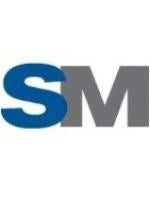The Internal Revenue Service (the "IRS") recently issued final regulations governing the diversification requirements for certain ESOPs. As discussed in our February 15, 2008 blog article, the IRS issued proposed regulations under section 401(a)(35) of the Internal Revenue Code (the "Code") in January 2008. The final regulations largely incorporate the proposed regulations with a few changes and clarifications.
Background
Section 401(a)(35) of the Code was added by the Pension Protection Act of 2006. Prior to its enactment, ESOPs were required to allow participants who were at least 55 years of age and had completed at least 10 years of participation in the ESOP to diversify the investment of a portion of their accounts in assets other than employer securities. Section 401(a)(35) of the Code establishes additional diversification requirements for ESOPs that hold publicly-traded employer securities. The new provisions require that all participants be allowed to direct the portion of their accounts attributable to employee contributions and elective deferrals that are invested in the publicly-traded employer securities to other investment options. For the portion of employer contributions other than elective deferrals, the same diversification rights must be given to each participant with at least three years of service. The diversification requirements under Section 401(a)(35) of the Code are generally effective for plan years beginning after December 31, 2006.
Investment Funds
The proposed regulations provided that certain investment funds holding employer securities as part of a broader fund would not be treated as holding employer securities for purposes of the diversification requirements. This exception was limited to the extent the employer securities were held indirectly through an investment company registered under the Investment Company Act of 1940; a common or collective trust fund or pooled investment fund maintained by a bank or trust company supervised by a state or federal agency; or a pooled investment fund of a qualified insurance company. Additionally, the investment was required to be independent of the employer and the employer securities could not exceed 10% of the fund.
Commentators had requested that this exception be broadened in the final regulations to include funds that are managed by an investment manager (within the meaning of ERISA section 3(38)). The final regulations do not provide for this expansion under the rationale that such a fund would not necessarily be holding employer securities only as an indirect result of its investment policy. However, the final regulations changed the reference to a fund that is an investment company registered under the Investment Company Act of 1940 to instead reference a regulated investment company as described under Section 851(a) of the Code. This change extends the type of investment companies that fall under the exception to include certain exchange traded funds.
Conclusion
It is important to note that the new diversification rules apply only to ESOPs that hold publicly-traded employer securities. Closely held companies continue to be subject to the diversification requirements applicable to participants who are at least 55 years old with at least 10 years of participation in the ESOP. Please see our February 20, 2007 blog article for a discussion of timing problems and solutions associated with the diversification rules that extend to companies who stock is not publicly traded.


 />i
/>i
